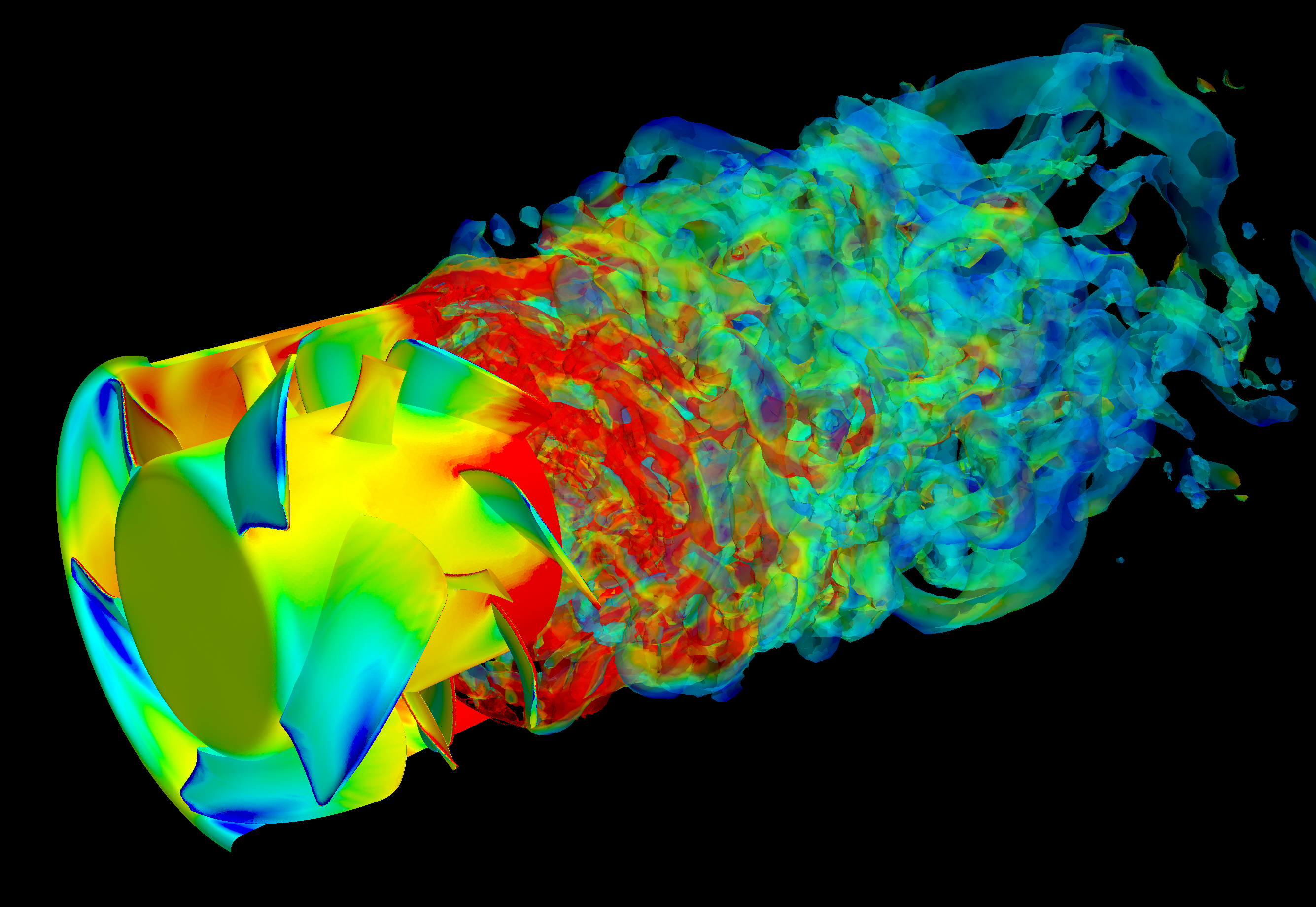
19 Mar Contra Rotating Fan Aeroacoustics
Contra-rotating fans have several advantages over single stage axial fans. If they are well designed, the exit flow field is almost irrotational. This helps to increase the aerodynamic efficiency by up to 16%, when compared to single stage fans. However, since the second stage interacts with the flow disturbances from the first stage, the associated noise generation is a disadvantage. This may be remedied by carefully tuning the design.
The optimization of a contra-rotating fan involves a large set of design parameters. These include the geometrical parameters of the the fan blades, the winglets, the guide vane as well as the hub diameter. We demonstrate a genetic algorithm which helps to automate the optimization process. It is controlled by two objective functions: (1) aerodynamic efficiency and (2) the emitted tonal noise.
For the evaluation of the sound pressure, we use a lattice-Boltzmann solver. Due to its algorithmic structure, it is ideally suited for massive parallelization. To leverage this potential, it is designed to run on general-purpose graphics processing units (GPGPUs). To further accelerate the genetic optimization, it is supported by a meta-model based on a radial-basis function network.
We demonstrate the method for a small contra-rotating fan. Our numerical results are compared with physical tests. The new algorithmic arrangement has shown to drastically cut down development costs and time.





Sorry, the comment form is closed at this time.